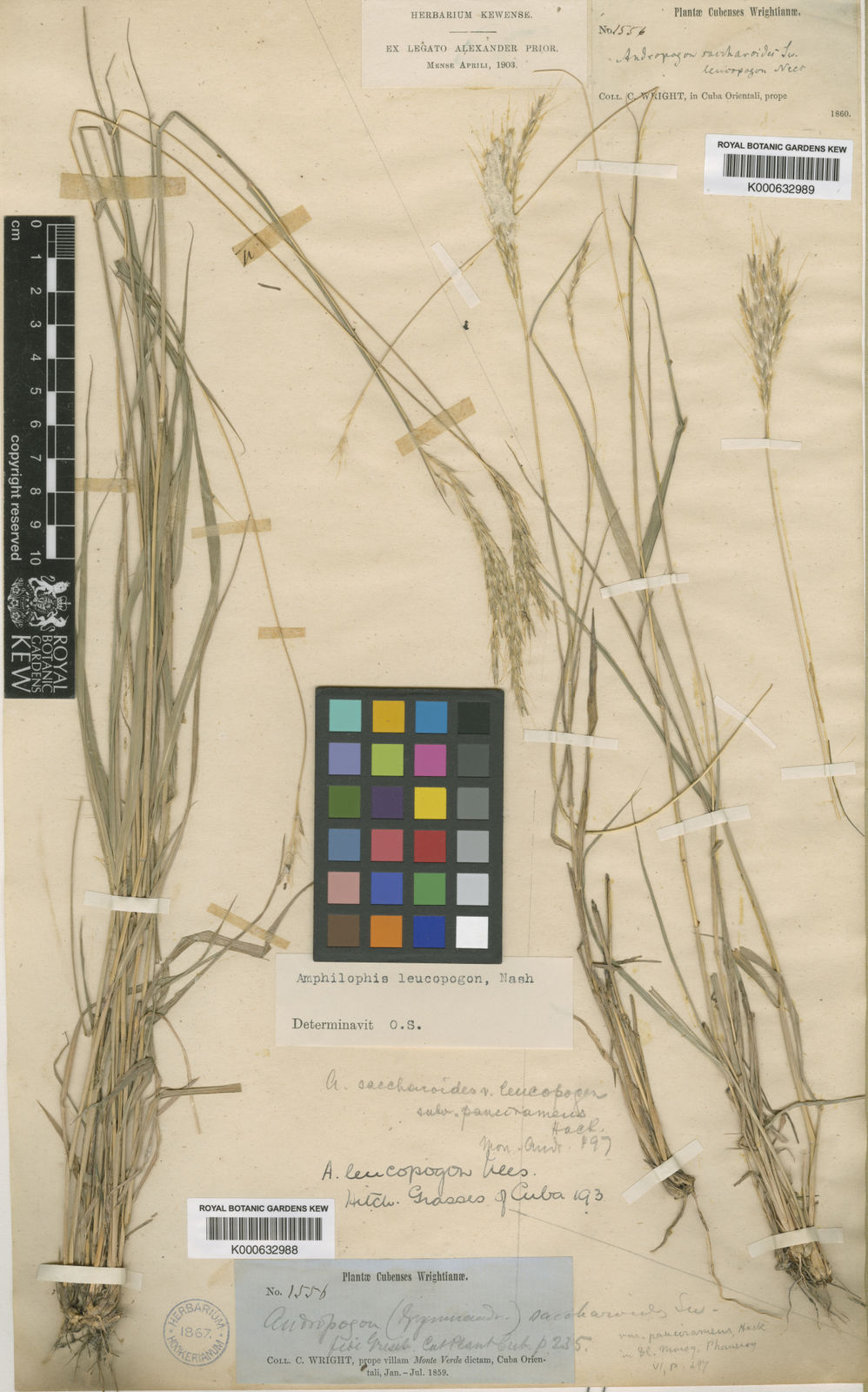Family: Poaceae
Author: (Sw.) Rydb.
Bibliography: Brittonia 1: 81 (1931)
Year: 1931
Status: accepted
Rank: species
Genus: Bothriochloa
Vegetable: False
Observations: SW. & SC. U.S.A. to Trop. America
Description
Silver bluestem, scientifically known as Bothriochloa saccharoides, is an important grass species within the Poaceae family. This versatile plant is widely distributed, spanning across the southwestern and south-central regions of the United States and extending into tropical areas of the Americas.
Characterized by its slender stems and delicate, silvery-blue foliage, Silver bluestem thrives in a variety of habitats, from open grasslands to disturbed soils. Its adaptive nature makes it a resilient species capable of withstanding different environmental conditions. This trait has contributed to its widespread presence and importance in native plant communities.
One notable feature of Silver bluestem is its role in erosion control, due to its robust root system which helps stabilize soil. This makes it valuable in ecological restoration projects and land management practices aiming to conserve soil integrity. Additionally, it provides forage for livestock, especially in regions where other grasses may not flourish as well.
The significance of Bothriochloa saccharoides in the grasslands of the Americas can be traced back to its description and categorization by Rydb. in 1931, as documented in volume 1 of Brittonia. This foundational publication has established its nomenclature and highlighted the botanical characteristics that distinguish it from other grass species.
In essence, Silver bluestem is a resilient and ecologically beneficial plant that plays a crucial role in its native habitats, from providing livestock forage to aiding in soil stability, cementing its status as an important member of the Poaceae family.
Common Names
Heb: mashbal malbin, משבל מלבין
En: Silver bluestem
Fr: Barbon faux-saccharum
He: Mashbal malbin, משבל מלבין
Synonyms
- Andropogon saccharoides subvar. typicus (Hack.)
- Sorghum saccharoides ((Sw.) Kuntze)
- Dichanthium saccharoides ((Sw.) Roberty)
- Holcus saccharoides ((Sw.) Stuck.)
- Andropogon saccharoides var. genuinus (Hack.)
- Amphilophis saccharoides ((Sw.) Nash)
- Andropogon saccharoides subsp. genuinus (Hack.)
- Andropogon saccharoides (Sw.)
Distribution
- Argentina Northeast (native)
- Argentina Northwest (native)
- Argentina South (native)
- Arizona (native)
- Bolivia (native)
- Brazil South (native)
- Brazil West-Central (native)
- California (native)
- Chile Central (native)
- Colombia (native)
- Cuba (native)
- Dominican Republic (native)
- Ecuador (native)
- El Salvador (native)
- Guatemala (native)
- Haiti (native)
- Honduras (native)
- Jamaica (native)
- Leeward Is. (native)
- Mexico Central (native)
- Mexico Gulf (native)
- Mexico Northeast (native)
- Mexico Southeast (native)
- Mexico Southwest (native)
- New Mexico (native)
- Nicaragua (native)
- Panamá (native)
- Paraguay (native)
- Peru (native)
- Puerto Rico (native)
- Texas (native)
- Uruguay (native)
- Utah (native)
- Venezuela (native)
- Windward Is. (native)
- Palestine (introduced)
Additional Images
Fruit
Taken Feb 12, 2020 by Philippe Weber (cc-by-sa)
Taken Nov 1, 1999 by Tela Botanica − Liliane Roubaudi (cc-by-sa)
Habit
Taken Nov 1, 1999 by Tela Botanica − Liliane Roubaudi (cc-by-sa)

© copyright of the Board of Trustees of the Royal Botanic Gardens, Kew.

© copyright of the Board of Trustees of the Royal Botanic Gardens, Kew.

© copyright of the Board of Trustees of the Royal Botanic Gardens, Kew.
Sources
- WFO (No URL)
- IPNI (No URL)
- GBIF (https://www.gbif.org/species/2704103)
- POWO (http://powo.science.kew.org/taxon/urn:lsid:ipni.org:names:35205-2)
- PlantNet (https://identify.plantnet.org/species/the-plant-list/Bothriochloa saccharoides (Sw.) Rydb.)
Specifications
Growth form>: Bunch
Growth habit>: Graminoid
Growth rate>: Moderate
Growth
Ph maximum: 7.2
Ph minimum: 6.5
Light: 9
Atmospheric humidity: 3
Soil nutriments: 6



